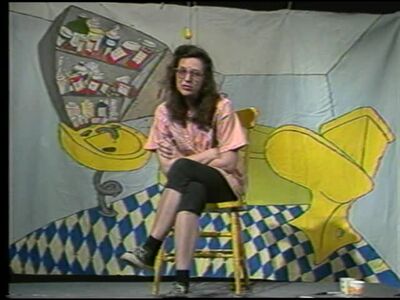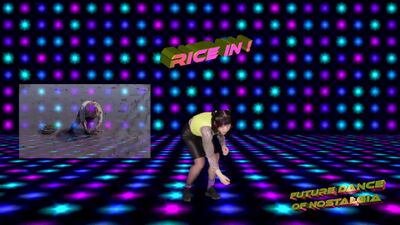User:)biyibiyibiyi(/grad project/narrative video archive
project production
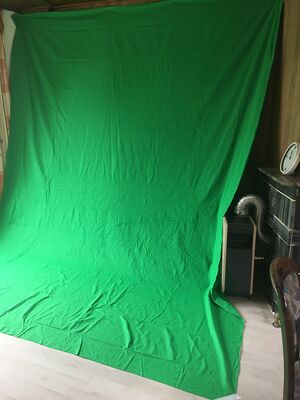
green screen for chroma key
calisthenics series
repeater_narration
footage collection
Why video?
I haven’t worked with video before, and I am not a video artist. As I research further into the repeater, and having the cassette tapes my parents sent me from China, I intuitively approached this medium. I am attracted to the expand the durational potentials the video medium has. As I researched more into what I label as “narrative videos”, I confirmed my intuition. Video can be a great medium to experiment with, for the topic of the repeater and its contexts.
Alternatively I also knew about the term “video essays”. But my narration is not very essay-ic so I stick with narrative video.
References
Narrative videos: references:
Donna Haraway Reads 'The National Geographic' On Primates
During tutorials with Michael, he first suggested me to watch Donna Haraway’s video in the Paper Tiger video archive. Haraway’s video contained all the strategies I want to employ in my video experiments:
- Performative:
Haraway was being performative in the video. I liked in the beginning, when she was about to commence her critique of Koko the chimpanzee, she compared how cultural critics looks into layers of culture; as she talked about this comparison, she took out a layered cake (nestle), took a bite, and wiped her fingers inside her field clothes. The layered cake worked as a prop to help Haraway’s narration. As Haraway explained how coded culture is like a ball of yarn, and the culture critic is to untangle this ball of yarn, she literally took out a ball of yarn. The yarn re-appeared again as she summarized her narration in the end of the video.
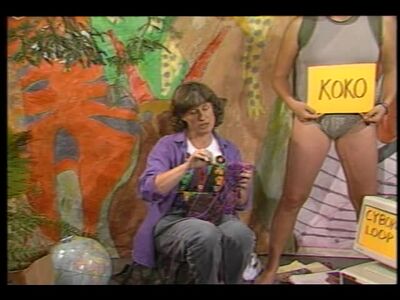 untangling a ball of yarn
untangling a ball of yarn
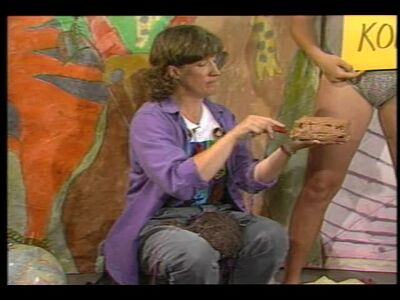 analyzing as if eating a layer cake
analyzing as if eating a layer cake
- Narration-driven:
Throughout the video Haraway was analyzing how Koko, a chimpanzee who was taught to use the American sign language, was coded as a symbol of universal man. Haraway’s spoken analysis is the red line the video.
- Set-up:
The set-up is very intriguing. Haraway was wearing a purple fieldwork blouse. The video interior was filled with trees trunks, leaves. On the other hand there are also video monitors on the floor, playing archival footage when it was turn switch the screen for playing archival footage. As if, the interior tried to realize the wild living surrounding of Koko, but it was not wild, since it was filled human interferences such as the monitors.
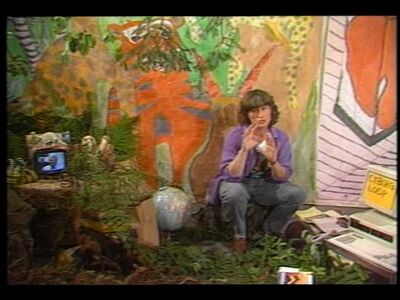 setup
setup
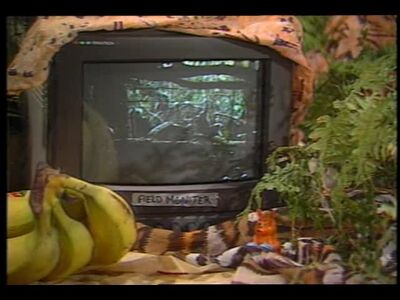 field monitor tiny sticker made from masking tape
field monitor tiny sticker made from masking tape
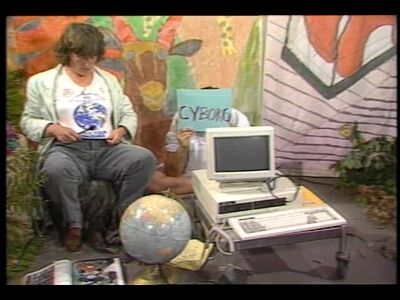 more equipments
more equipments
- Additionally
there were also models stood behind Haraway as she continued her analysis section by section. They’d be holding cards, doing actions (putting electron-pads looking props on Haraway, for example). I am not very sure why they are set there, must have something to do with Koko and the concept of the the coding of Koko as a human being like creature. But I like how there were these models standing behind Haraway to activate the narration.
- Finally
non video artists can utilize video as creative story telling tool: Haraway is a cultural critic, she was able to use video in an incredibly interesting way to illustrate her analysis. I worry that since I am not a video artist, I am not able to use this medium in a skilled way to achieve the objectives I intend to. But this example inspired and encouraged me.
The video was not only Haraway’s work but also a collaboration between PT and Haraway. Inspired greatly by Haraway, I looked extensively into the Paper Tiger Television Archive.
Kathy High, Just Say Yes: Kathy High Looks at Marketing Legal Drugs:
During IMPAKT Festival in Utrecht last year, I watched one of High’s latest works. Among the films screened during the program it stood out as having the most capturing topic, on the “transplanting” of human faeces to cure gastronomical symptoms. The film recorded surgeries, lab works, and interviews with medical experts. When I saw High’s work again in the Paper Tiger archive I was surprised, but not surprised at the same time. I was surprised because, I didn’t know that narrative video had been used in 89 to critically discourse how the pharmaceutical industry impacted people’s consumption towards legal drugs, by advertisements and policy making/lobbying. I am not surprised because, seeing her work during IMPAKT, I am able to relate to her more dated (but still profoundly relevant) work.
- Setup
The setup of the video is not complex. High was seated in front of a backdrop, narrating. As her narration reached further illustration, the narration is switched to video footage such drug advertisements.
From Woodstock to Tiananmen Square
I liked the strategies of narration used throughout the video.
- Costume
First, the narrator entered, dressed in a bunny custom. The costume and set up created the atmosphere as if he was reading a bedtime story to children. But no, the innocent appearance was only an orchestrated one. The narrator began to flip through a book (as if that’s the story book for children). The content of the book (not children’s book, but visual documentation on the event) was projected on the background of the video. A doll monkey was portrayed filming the book.
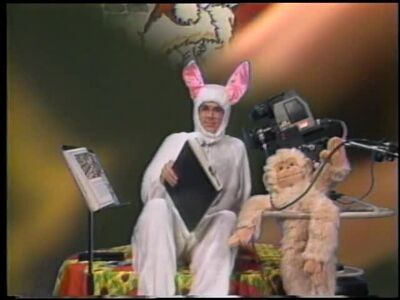
- Strategically insert comments and narration
In between scenes, a narrator would “pop” from a “perspectival box”, the footage was projected on the box as well.
During the narration the narrator merged with the subject of critique.
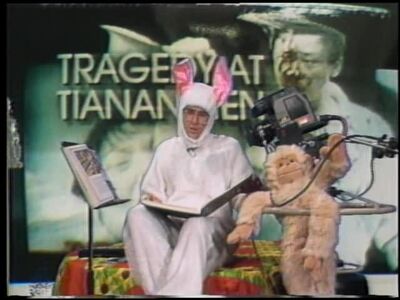 projection background with documentation footage
projection background with documentation footage
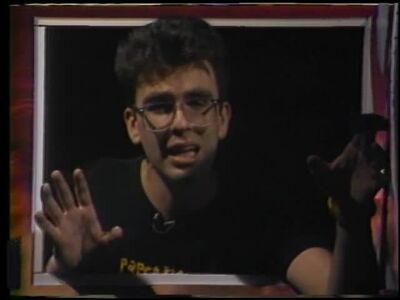 speaking from a box, notice there are projection of footage around the edges
speaking from a box, notice there are projection of footage around the edges
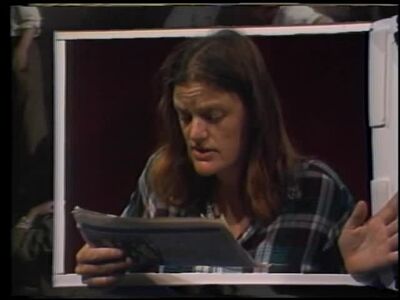 reading from a box, similar to above.
reading from a box, similar to above.
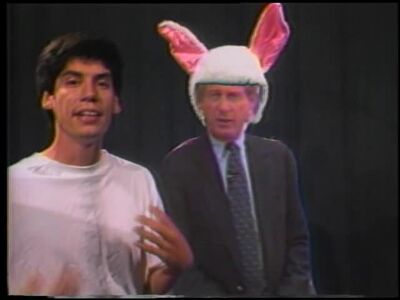 the narrator is collaged with the figure being critiqued
the narrator is collaged with the figure being critiqued
These strategies divided the narration’s flow to parts, creating a rhythm that helps viewers to enter into the story. They also created a surreal, yet critical temperament. This ambiguous, playful perspective provoked me, as the viewer, to think upon the questions raised during the video.
Kexin Hao: Future Dance of Nostalgia
I discovered this fellow KABK design student’s work on YouTube. On her channel there are several videos made from chromakey footage. FDN featured her performing actions of growing and harvesting rice, weaving, etc. The performance was filmed in front of a green screen and chromakeyed, edited, and made special effects.
- Chromakey
Chromakey: Disembodied gestures, placing the performer in front of different scenarios. Performing Gestures: Like actions Kexin did in her performance, I will perform actions using the repeater in my video narrations.
Farocki & Kevin B Lee: Serious Games & Interface
On another page for affective gestures!!!!!!!
this page is only for video techniques. expand farocki on another page
During a tutorial session with Michael I was showing him how I tapped on the buttons of the repeaters. He mentioned the affective quality of these actions. He also mentioned Farocki’s videos as a reference, such as Serious Games. Serious Games was a good reference because it used split screens.
At the same time when I discovered Farocki’s work (since first year when Steve mentioned him to me), I also discovered a video artist Kevin B Lee, who’s work, was another recursive recreation of Farocki’s work. I thought it’s recreation because, Farocki created his video work from existing footage, and Lee, as an artist who studied Farocki, created his video work from footages of Harocki…
Both of their work are fascinating. Like Haraway’s video, they are loaded with techniques and perspectives I am a bit awed by. The topic of affection is present in Serious Games, in which Farocki filmed the American soldiers interacting with the screen and mouse during their virtual war trainings. One screen would show directly their virtual training environment and the other would show them training.
In Serious Games Farocki did not comment. He made a generous gesture to let the viewer to associate the relationship between two screen sections, and interpret these footages themselves (in Michael’s words).
In Kevin B Lee’s words, a video with significant narration is a video essay. Commentaries were present in two video works, one by Farocki and another by Lee, and Lee’s was made in reference to Farocki’s. Farocki: Interface; Lee: Interface 2.0.
Interface: writing interface, watching television, television as the interface, computer screen as the interface to watch videos, editing software and hardware as interface to manipulate video work. Multiple screens: one footage comment another Depicting affective gestures on hardware interface
“The editing station is one image, containing many images, each in relation to the other” Except his work studying Farocki, Lee is also original in creating what he named as “desktop documentaries”.
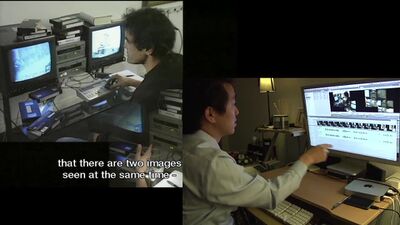 split screen featuring parallel footage
split screen featuring parallel footage
even though as I visioned my grad work more in form of an archive. story-telling/context-realizing/


